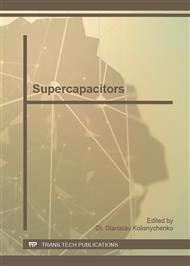p.2832
p.2836
p.2841
p.2846
p.2851
p.2855
p.2861
p.2866
p.2871
Fault Ride through of Doubly Fed Induction Generator Wind Turbine Based on Supercapacitors Energy Storage
Abstract:
This paper proposes a low voltage ride through (LVRT) scheme of doubly fed induction generator (DFIG) based on the supercapacitors energy storage. The novel control strategy of the bi-directional converter and the grid side converter is established. Simulation model of the DFIG system is developed. Simulation results show that the presented scheme can efficiently reduce the DC-link overvoltage, supply reactive power to the power system through grid side converter, and help grid recovery under system fault, improving the LVRT capability of the system.
Info:
Periodical:
Pages:
2851-2854
Citation:
Online since:
October 2011
Authors:
Price:
Сopyright:
© 2012 Trans Tech Publications Ltd. All Rights Reserved
Share:
Citation:



